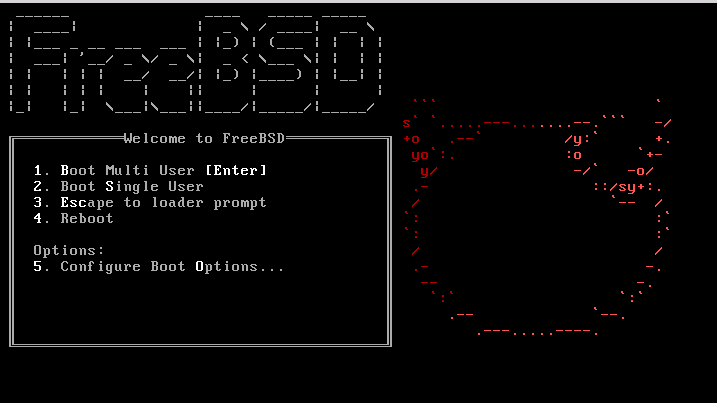A while ago I decided to unretire my 2006 Macbook and turn it into a low powered server. Specifically to run a BBS, but more on that in a later blog post. To get FreeBSD running properly requires a bit of trickery, so i decided to write a little howo to save you some time and effort. For this you will need the following:
Perquisites
- A FreeBSD install DVD burned with the i386 image as we're dealing with a 32 bit core duo machine here. If you're into that sort of think you can also create a FreeBSD USB stick.
- The OS X Tiger (10.4) Install DVD
Now for the fun part:
-
Insert DVD/USB stick into Macbook and boot
-
Hold down the option key to choose to boot from the DVD/USB stick. The boot media should be displayed as "Windows" by the Mac boot manager
-
Install FreeBSD with default partitions and whichever options you want
-
With 10.1 I kept getting a
1 | No bootable device -- insert boot disk and press any key |
message on bootup. This can easily be fixed by exiting to the shell after the install and typing in
1 | /sbin/gpart set -a active adaX
|
where adaX is the boot partition. I think this is ada0s1 on the Macbook with the default partition options, but i'm not 100% sure. Please feel free to correct me in the comments if i'm wrong.
-
Exit and reboot. While rebooting hold down the left trackpad button to eject the DVD. Obviously if you're installing from USB this shouldn't be an issue. Insert the OS X Tiger install DVD and reboot again.
-
Hold down the C button during the chime to boot from the Tiger DVD. Once booted choose your language and then open the terminal (Utilities/Terminal). Now you need to bless the boot partition (Yes, the engineers at Apple have quite the ego). Type the following in the shell:
1 | bless --device /dev/disk0s1 --setBoot --legacy |
- Reboot again and you should be rewarded with the FreeBSD boot screen:

Now pat yourself on the back for a job well done. You deserve it.
